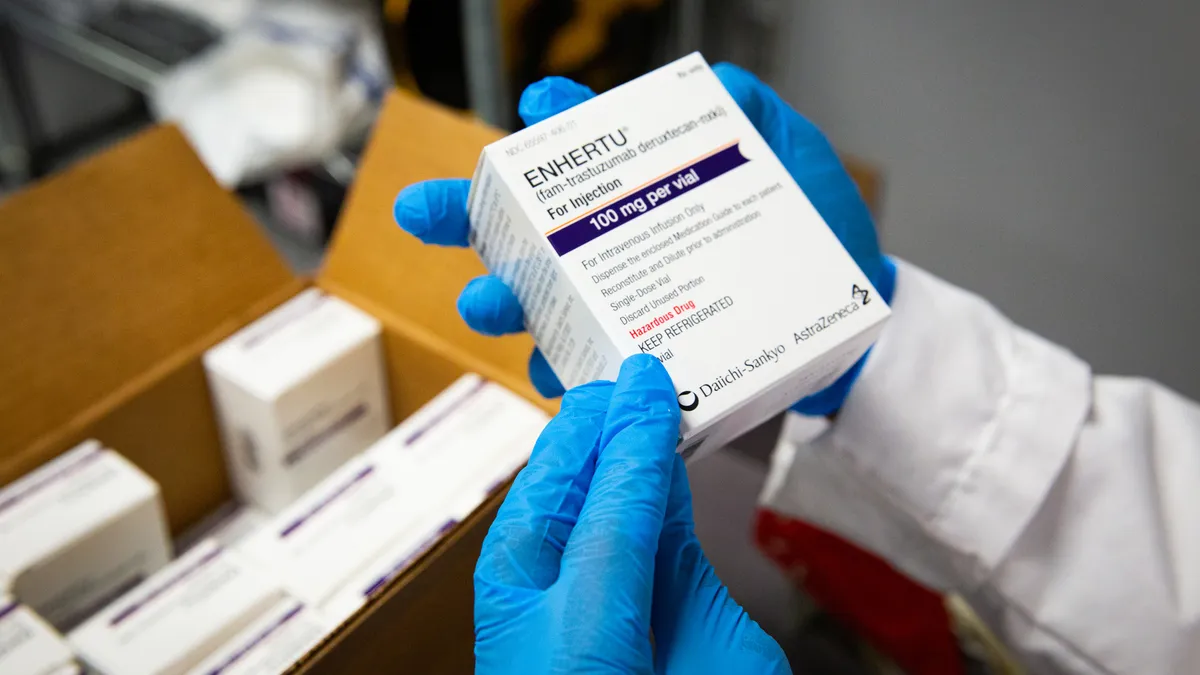The pandemic created an opportunity for the industry to invest in and reap the benefits of new media tactics.
 Over the years, the pharmaceutical and healthcare industry had been hesitant about fully jumping on the social media bandwagon, but the pandemic of 2020 forced companies to go to places like TikTok, Snapchat, Twitter, Facebook, and other social media channels.
Over the years, the pharmaceutical and healthcare industry had been hesitant about fully jumping on the social media bandwagon, but the pandemic of 2020 forced companies to go to places like TikTok, Snapchat, Twitter, Facebook, and other social media channels.
If the pharma industry wanted to be where consumers were during COVID-19, then it had to move to media channels that are creative, mobile, and personalized. On the upside, having its hand forced by the new digital climate to use social media has given companies the opportunity to see that SM can work, even within its heavily regulated environment.
Under the auspices of COVID, pharma companies and their brand names are appearing in places such as TikTok, Twitter, and other social media channels, sometimes by consumers posting about getting their vaccine and what brand they received. In other posts, healthcare providers are spreading information relevant to the pandemic. For example, Jeff Wright, who is a comedy writer for 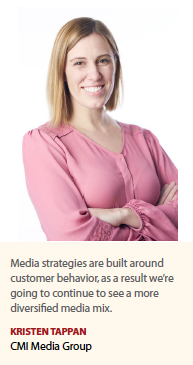 the Late Night with Seth Myers show, wrote a script for a video for the show that later appeared on Twitter, called “If the COVID-19 Vaccines Interview for a Job." The bit featured actors representing Pfizer, Moderna, AstraZeneca, and Johnson & Johnson in a parody about the different COVID-19 vaccines.
the Late Night with Seth Myers show, wrote a script for a video for the show that later appeared on Twitter, called “If the COVID-19 Vaccines Interview for a Job." The bit featured actors representing Pfizer, Moderna, AstraZeneca, and Johnson & Johnson in a parody about the different COVID-19 vaccines.
Even though the skit was not created by or even for pharma, the door has been opened and there’s no looking back now.
Over the past year, pharmaceutical marketing has shifted toward more digital channels as the industry experienced decreased salesforce access, a move to virtual medical meetings, and fewer in-office patient visits, says Kristen Tappan, VP, media, CMI Media Group.
On the consumer side, she says, there was adoption of telehealth services and increased time spent with social media and television, even while live events were interrupted and networks struggled to produce new content. On the professional side, targeted digital media and content journeys are more important than ever for brands to stay relevant and generate engagement between less-frequent sales calls. “Messaging is more impactful and media buys are more efficient when they’re tailored to a specific audience or segment, a direct response to a prior engagement or market event, or sequenced in a meaningful way," Ms. Tappan says. “We are increasingly automating this type of targeting to drive impact and eliminate waste."
As the United States moves from managing COVID-19 to managing a recovery, Denis Philipps, director of media at Greater Than One, says it is clear that the pandemic lockdown had a profound impact on how people consume media and how they receive healthcare information, and changed their expectations around how brands connect with them. “COVID-19 accelerated digital transformation in healthcare for both patients and HCPs," he says. “What could have taken a decade, happened in a mere few months."
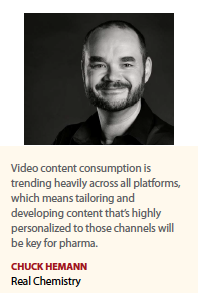 The pandemic has also led to further media fragmentation, impeding the delivery of a single and coherent value proposition to customers. New complexity will be introduced by future changes in the technology space and for privacy issues. Brands and media agencies will need new ways to think about customer engagement. “For marketers, building brand value with customers will be tantamount to marketing success in this brave new world," Mr. Philipps says.
The pandemic has also led to further media fragmentation, impeding the delivery of a single and coherent value proposition to customers. New complexity will be introduced by future changes in the technology space and for privacy issues. Brands and media agencies will need new ways to think about customer engagement. “For marketers, building brand value with customers will be tantamount to marketing success in this brave new world," Mr. Philipps says.
TikTok: Who Would Have Thought
TikTok in particular has flourished during COVID. According to a March 2020 report by the Evoke Group, the COVID-19 pandemic sparked a 24.3% month-over-month rise of unique U.S. adult visitors on TikTok as more people stayed indoors, absorbing more content over longer periods of time. Initiated by the need to find out more about the virus, many adults on the platform are now engaging in healthcare discussions beyond coronavirus, for example cardiology, sex-education, mental health, dermatology, or general medicine, which are often sparked by doctors and nurses who’ve gone viral on the platform.
According to Evoke, TikTok now has more than 800 million monthly active users, including healthcare professionals, care partners, and consumers of all ages posting about health. As TikTok continues to grow, more brands are recognizing the importance of the app in reaching a younger demographic. TikTok has responded to this uptick of advertiser interest by creating a comprehensive, affordable, and biddable ad structure that is similar to other social platforms, with advertisers being able to set up ad accounts and choose campaign parameters.
Agile Therapeutics is one company that has taken advantage of TikTok and other social media during this time, using unbranded messaging to educate young women about all of the different types of birth control offered, beyond its own product Twirla, and creating a forum that enables viewers to make the correct choice for their needs.
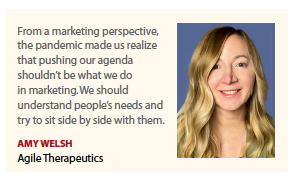 According to Amy Welsh, VP of marketing, Agile Therapeutics, this is just the beginning for how her company plans to use digital channels in the future. “We will continue to use these channels post-COVID, and we will continue to learn from, listen to, and understand both HCPs and patients more intimately as a result," she says.
According to Amy Welsh, VP of marketing, Agile Therapeutics, this is just the beginning for how her company plans to use digital channels in the future. “We will continue to use these channels post-COVID, and we will continue to learn from, listen to, and understand both HCPs and patients more intimately as a result," she says.
With Generation Z and Millennial women getting most of their health information via digital and social media platforms — more than 50% of both generations turn first to social media for health advice — Agile Therapeutics decided it was the perfect time and place to provide information on birth control.
In late 2020, Agile introduced the “I’m So Done" campaign, encouraging women to think about their current birth control method and the other choices available to them. Touted as the first birth control campaign to use this platform and engage with its target audience, Agile aims to create a constructive and safe dialogue on all the social channels women are using. In addition to education, “I’m So Done" provides a safe place for women to discuss their experiences with the reassurance that they are not alone on the @SoDoneClub Facebook and Instagram pages.
“It took a pandemic for some of us pharmaceutical marketers to realize that we can pay lots of money to map a patient journey, but patients are out there having real conversations and their journey starts with talking with their parents, their friends, their teachers, in the middle of Starbucks on their phones with each other," Ms. Welsh says. “It’s not about putting a product in front of consumers anymore. Patients are smart. It’s about being a part of the conversation they’re having and maybe helping them understand that there are lots of options."
According to Chuck Hemann, practice leader, integrated intelligence and activation at Real Chemistry, over the past year the industry has shown more of an interest in testing out new platforms such as TikTok, and the social platform has responded. “We’re seeing a lot of brands interested in TikTok," he says. “We have been working with TikTok over the last six months or so about its approach to pharma. Health is a new space for the app. The evolution of TikTok within healthcare has been pretty similar to the other social platforms, starting first with general awareness and PSA-related messaging eventually moving into branded programming."
Mr. Hemann says TikTok has recently launched branded programming for a number of health conditions. He expects its trajectory will follow the same path as Facebook and Twitter, meaning users in the beginning are young and as the app matures, so does the audience.
Digital and Audio Engagement Reaching New Peaks
Online engagement with digital video also gained ground during the pandemic; this was a trend that existed pre-pandemic, but greatly accelerated when everyone moved online.
“Digital video has increased in importance to pharmaceutical marketers for both audiences — patients and HCPs," Mr. Philipps says. “It has become the platform of choice to provide education and, of course, entertainment."
Video was a trend before the pandemic hit, but it has surged over the last 12 months, particularly social video and CTV/OTT.
“We are going to continue to see a pivot from static imagery toward more personalized video," Mr. Hemann says. “That personalized video will be delivered through multiple channels — programmatic, social, and television. This means pharmaceutical companies need to be thinking about more than reach delivered through linear television with their video content. Digital and more addressable forms of television offer the requisite scale and targeting capabilities that brands covet. This trend is only likely to continue accelerating over the next 12-24 months."
Targeted TV and OTT — over-the-top media services offered directly to viewers via the Internet — will continue to increase in popularity over the next 12 to 36 months, because they’ve now reached the requisite scale, he adds.
“Increased connected TV consumption by patients also reflects a shift in consumer preferences for engagement," Mr. Philipps says. “For HCPs, the gap left by a lack of access to traditional education resources like the pharma salesforce and conferences has led to a penchant for digitized resources online. Both patients and HCPs expect content to always be readily available in a video format."
“Looking at the content consumption trends across these platforms, almost all of them lean heavily toward video," Mr. Hemann says. “People are engaging more and more in video-oriented content, both short and long forms."
In terms of targeted TV, people have started cutting the cord and piecing together their viewing experience through multiple connected TV OTT partners — Roku, Netflix, Amazon, Hulu, and Viacom.
Marketers are wondering if once the world starts to open up post-COVID, will there still be an interest in content. “It is likely that we will see the content consumption of consumers dip once we open up," Mr. Hemann says. “But, one of the benefits of the connected TV or OTT experience is that patients or consumers can watch the content when it makes sense for them and their schedule. So, it will make sense for brands to evaluate these channels as a way to generate reach without missing the impressions that they might have gotten from a linear TV buy."
Spotify, the audio streaming and media services provider, is another avenue that Ms. Welsh believes is a place for targeted, personalized messaging for pharma. “We need to embrace a more tailored approach, and we’re looking at the world of streaming," she says. “We’re also looking at podcasts. The trend of influencers has blown up. We are finding that linear TV ads are not the best way to send a personal message that a pharmaceutical company might want to share about a specific product. If we embrace these media in the right way, we can gain the consumer’s trust by understanding their journey."
Sales: A Whole New Frontier
The level and types of access the pharma salesforce has to HCPs has permanently changed; there is greater reliance on digital resources that provide HCPs with choices around when and how they engage with educational content. Mainstays such as email and trusted peer journals, whether digital or in a traditional paper format, have grown in importance due to their inherent flexibility for busier-than-ever and often exhausted HCPs, Mr. Philipps says.
The pandemic forced many marketing managers, who would have otherwise relied on face-to-face events such as trade shows, as anchor points to build marketing plans, to totally shift tactics to online. As a result, webinar numbers rocketed upward toward the end of 2020 as did the increase in electronic direct mail marketing.
“Many companies totally pulled back from print and did much more around social media marketing," says Gareth Pickering, co-founder, director at Orientation Marketing, adding that loading everything to digital is not necessarily a sound strategy. “Although the inclination would be to move everything online, print still has its place, especially in pharmaceutical marketing. In either case, the focus should be on creating and using good quality content."
Agility is going to be key in post-pandemic media planning. With all marketers turning to digital at once, share of voice has diminished and brands need to work harder to stand out. While in-person sales calls will gradually increase, they likely won’t return to pre-pandemic levels, so it’s more critical than ever to have a seamless experience across online and offline channels and to leverage real-time data to make quick optimizations. “With less-frequent patient visits, aligning messages to the customer journey is even more important," Ms. Tappan says. “Brand marketers should be engaging in social listening to identify gaps in messaging or media buys and make changes as necessary."
What’s Next?
Ms. Tappan says media strategies are built around customer behavior, so in the future there will continue to be a more diversified media mix as a result. Big companies such as Amazon are jumping headfirst into the healthcare space while simultaneously rolling out new advertising offerings with streaming content and podcasts. “We’ll see diversification of both media channels and partners as a result," she says. “With so many emerging options, we need to stay focused on reaching the right people at the right time."
However, more digital interfaces mean more touchpoints. This in turn means marketers will need to become more focused on multi-channels so messages are repeated in the places where a customer or client may be.
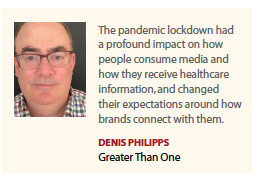 “There is no doubt that the increased number of interfaces means there is an increased likelihood of a message being lost among other advertisers, but an integrated cross-channel approach increases the likelihood that the message would likely stick in the long term," Mr. Pickering says.
“There is no doubt that the increased number of interfaces means there is an increased likelihood of a message being lost among other advertisers, but an integrated cross-channel approach increases the likelihood that the message would likely stick in the long term," Mr. Pickering says.
“With a CRM, marketing automation, or single customer view platform, which can manage the full customer journey, marketers can more easily manage their media strategies and optimize their campaigns for conversion," he adds. “For example, if the strategy is geared toward customer retention, different media assets can be presented during different stages of the traditional buyer’s journey. These channels offer the ability for messages to become more targeted and for marketers to send or display relevant advertising content that is fully integrated within an advertiser’s digital marketing plan and strategy."
Mr. Philipps says marketers will need to provide more choices and greater value. “To develop customer relationships, marketers might need to rethink what constitutes a meaningful digital media engagement," he says. “Microtargeting, custom propositions, and ongoing trusted engagements will be more important than ever."
Ms. Welsh credits the pandemic with making her a better marketer. “We have created better, smarter, more meaningful connections in marketing since COVID, and I hope we don’t ever go back," she says. “Even TV can be a very specific streaming medium with less waste and more meaning. Messaging should be less about the product and include an authentic conversational voice. From a marketing perspective, the pandemic made us realize that pushing our agenda shouldn’t be what we do in marketing. We should understand people’s needs and try to sit side by side with them."
Mr. Philipps warns however that this landscape shift is happening with a horizon that promises further data deprecation. Data deprecation restricts tracking and access to consumer data due to regulatory, browser, walled-garden, or consumer actions.
“The combination of expected new privacy regulations, a cookie-less future, and walled gardens, where only the content providers own the data — for example, Google, Facebook, etc. — creates a challenging situation for marketers," Mr. Philipps says. “For consumer marketing, it means a less of a Wild West environment and more carefully cultivated communities to reach, educate, and influence. The future will require a sophisticated set of solutions to maintain audience engagement. Initially it might seem like a hodgepodge of solutions for marketers and media buyers to unwrap, but those who apply rigorous testing and learning to hone their engagement strategies will offer brands a competitive advantage."
Media strategies will need to be built to activate on mid- and lower-funnel 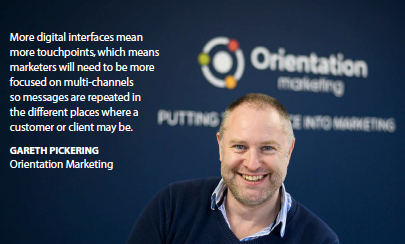 engagements, where relationship building is tantamount. There will be a need to better integrate channel strategy with content strategy to determine the right combinations of messages and optimal UX that will lead to a better customer experience.
engagements, where relationship building is tantamount. There will be a need to better integrate channel strategy with content strategy to determine the right combinations of messages and optimal UX that will lead to a better customer experience.
According to Mr. Hemann, there are three elements that marketers should be thinking about for future strategies. “One, is the right audience being targeted? Companies need to take a better look at their audience-targeting and their segmentation," he says. “Two, don’t lose the momentum that the pandemic created for testing new channels/tactics, a new type of creative, or a new audience targeting criteria, which should continue to be evaluated in a post-pandemic future. And three, targeting has never been better for pharma marketers, who should consider how to shift away from a pure linear focus to a strategy that is more connected, more addressable, and more targetable, whether that’s OTT, CTV, programmatic display, or online video. The scale is now there from both a digital standpoint and a connected TV standpoint, so why not leverage those targeting capabilities appropriately."
Ms. Welsh says the time to act is now, and to keep moving forward. “One of the good things to come out of the pandemic was it forced us to act," she says. “We decided to be less traditional in our marketing approach. We prioritized an unbranded campaign to build a community because it felt like the right time to do it. To be clear, we’re not marketing to them, we’re just trying to bring patients together. It’s time to finally facilitate authentic messaging where and when our consumers are, and be sure the message is not about putting the brand first. It’s time to be a part of the dialogue that is already taking place. It’s time for marketers to sit in the passenger seat rather than trying to drive their car."(PV)
~~~~~~~~~~~~~~~~~~~~~~~~~
Eli Lilly: Personalized Messaging During COVID Drove Tangible ROI
In a March 2021 article for the Think with Google Newsletter, Jennifer Oleksiw, chief consumer experience officer at Eli Lilly and Co., outlined how the company’s initial digital transformation enabled a quicker, customer-first response to the pandemic. Ms. Oleksiw wrote that before COVID hit, the company had already started to increase its digital commitment to deliver more personalized experiences for customers. This included investing in and adopting new technologies and approaches. Ms. Oleksiw says the pandemic taught the company how critical it is to listen, adapt, and respond to changing customer needs. In the pandemic’s early days, Lilly immediately responded by removing or updating TV and digital ads to better comply with COVID-19 guidelines.
In partnership with technology providers such as Google, the company developed a digital transformation road map that gave a clearer picture of how each customer population interacted with the brand day to day. Integral to this process was identifying which data sources were most helpful across the purchase journey, such as search behaviors and website interactions.
“With a personalized approach, our ROI increased between 12% and 35%, depending on the marketing channel," Ms. Oleksiw says. “In turn, we were able to show our stakeholders that personalized messaging drove tangible business results."
Ms. Oleksiw listed four important lessons Eli Lilly learned during COVID:
1. Prove value through low-risk experiments.
2. Re-evaluate your organizational model.
3. Treat data like intellectual property.
4. Invest in the right people and tools.
Source: Think with Google Newsletter for marketing research & insights.
~~~~~~~~~~~~~~~~~~~~~~~~~
TikTok During the Pandemic
Along with the rest of the world, TikTok has had an eventful 12 months. According to Sensor Tower, global downloads have now surpassed 2.5 billion, with 100 million active users in the United States alone. While the app initially grew in popularity as a way for teens to challenge each other with dances, TikTok’s demographic has steadily evolved. Healthcare providers (HCPs) and health consumer influencers have become significantly more prominent during the pandemic, helping TikTok become more relevant within the healthcare space than it’s ever been.
HCPs are using TikTok to connect with their patient audiences to share useful information, while also humanizing doctors. These HCP influencers are some of the first to jump in on trends, while adding their own medical viewpoint to ensure the content they’re sharing stays on-brand. This activity has been driven in part by the pandemic, but also by the increasing sophistication of what TikTok has to offer.
Since branded content beyond reminder ads would require scrolling ISI to be incorporated into a TikTok video, and the most effective TikTok videos are 15 seconds or less, unbranded or reminder ad content is the least challenging entry point for pharma.
Source: CMI Media Group



